Best cheap action camera 2022: the finest budget models you can buy
The best cheap action cams that beat GoPros for value
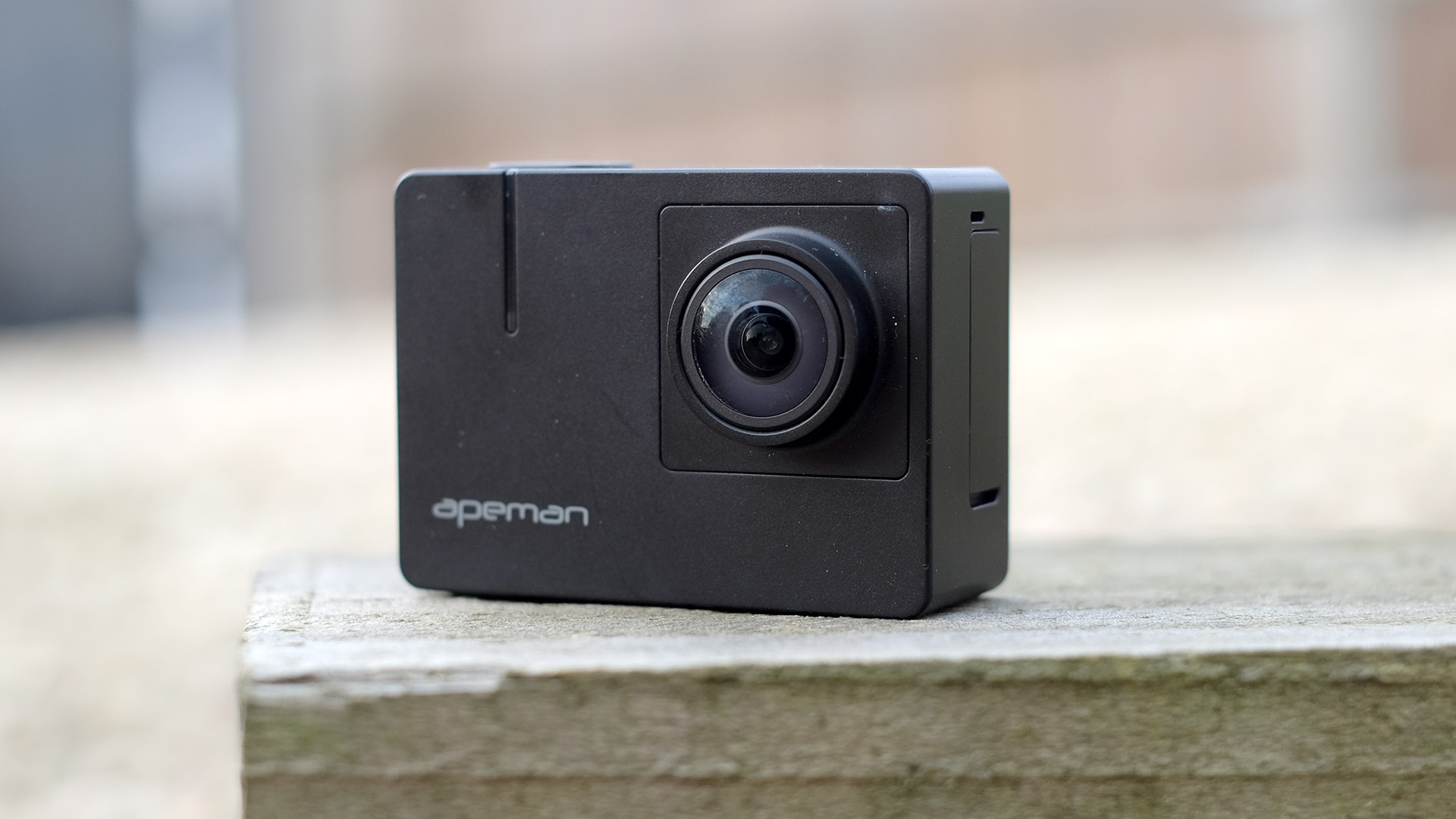
Looking for the best cheap action camera? You’ve found the right buying guide. From entry-level models to former flagships that are now more affordable, we’ve tested all of the best budget action cameras. So whether you want a rugged recorded for capturing your adventurous pursuits or a simple pocket camera that can go anywhere with you, you’ll find your ideal cheap action camera here.
What’s the best cheap action camera right now? We think the Kaiser Baas X450 is the top affordable action cam for most people. Its build is basic and its audio performance isn't anything to write home about, but it’s also lightweight at 73g and can capture lovely, detailed 4K footage at 30fps. Plus it has the best stabilization of any non-GoPro camera in this guide.
That said, it might not be the best option for you. You might want a model that’s even cheaper, in which case something like the Akaso EK7000 might be a better fit. It’s an imperfect but surprisingly capable option for those on a tight budget. Alternatively, you could be looking for a GoPro camera from a few years ago, in which case it’s worth hunting out the best deals you can find on models such as the Hero 7 Silver.
However limited your budget is, you’ll find the right action camera in the list below. We’ve picked out the most popular budget action cams around and tested them side-by-side to bring you this definitive guide, featuring the biggest bargains around right now. While the price cap means many aren’t perfect, every camera below has been included because we believe it offers genuine value. Some are so affordable that you could attach one to your handlebars, helmet or harness and not worry too much about losing it.
Not sure how best to weigh up the options against your available budget? We’ve also included some useful buying tips down at the bottom of this list to help you pick the perfect cheap action camera.
The best cheap action cameras in 2022:
Why you can trust TechRadar

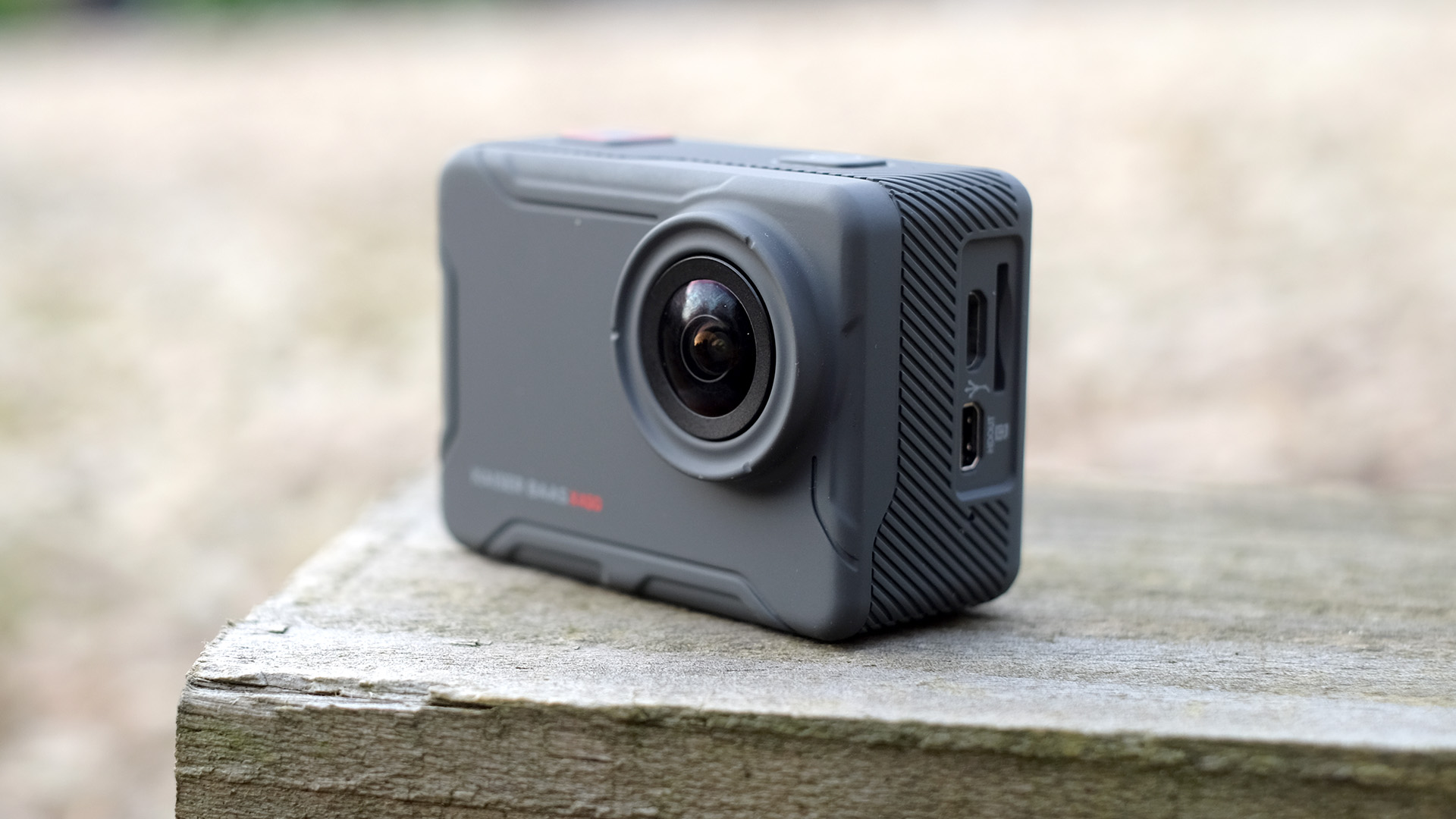
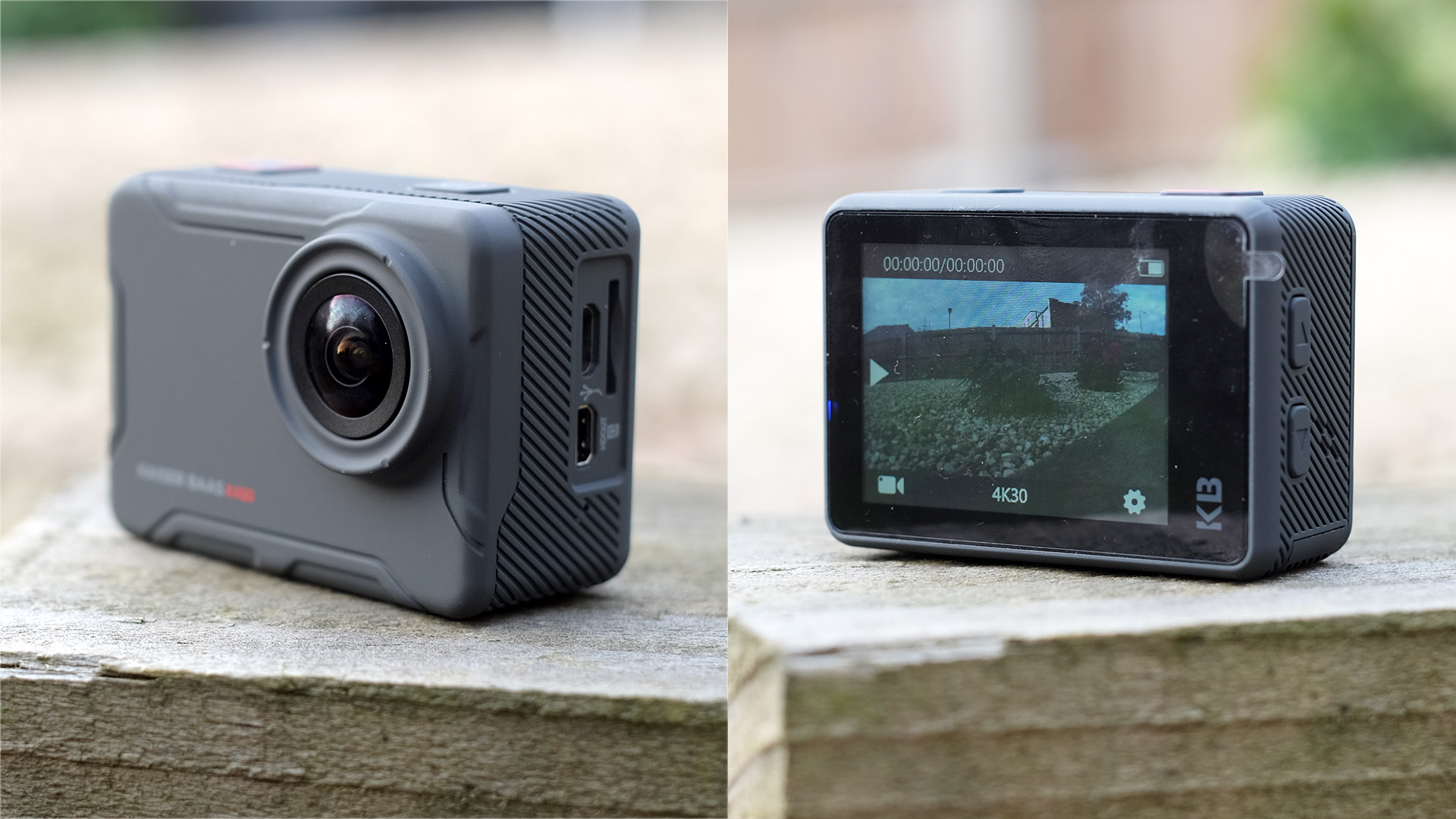
1. Kaiser Baas X450
Specifications
Reasons to buy
Reasons to avoid
If ready-to-roll 4K footage is the main thing you're after, then the Kaiser Baas X450 is a great option. It shoots lovely 4K footage, with its 14MP sensor even capturing slightly more detail than a GoPro Hero 9 Black at its 'wide' setting, in certain lighting conditions (based on a frame analysis at sunset).
Of course, this isn’t an entirely fair comparison as GoPro Black cameras have much wider-angle lenses than the Kaiser Baas X450, but we remain impressed. Detail is similar to the Apeman A100, but the Kaiser Baas has superior color processing, generally rendering warmer, more charming clips. Noise handling in low light is slightly better too, as you’d hope given its higher price tag.
The X450 also has the best non-GoPro stabilization in this guide too. To get this effect, an action camera has to make good use of a gyroscope, which can tell when natural handshake causes a little tilt motion. It can’t offer anything close to the gimbal-like stabilization of an Insta360 or GoPro, but for a cheap action camera we’re impressed.
There’s no water resistance unless you use the diving case, and the ports are exposed just like those of a really budget action cam. The Kaiser Baas X450 also doesn’t have a mic input, or a tripod thread on the cam itself. You do, however, get the necessary accessories in the box.
Kaiser Baas is less generous than most of the other companies in this guide. You don’t get two batteries, for example, just the one. And its capacity is a miserly 1,050mAh. The other $80-plus cameras here use 1,350mAh batteries. The camera’s audio is also fairly poor, with much lower output than the Akaso Brave 7 LE and the same absent treble and gated style we heard from the Apeman A100.
The Kaiser Baas X450 can’t be used as a webcam either, which is a shame as it would do the job very well (as long as you used a different mic). There are dozens ways to make the X450 better, but this is one of the best cheap action cameras for outright image quality and stabilization.

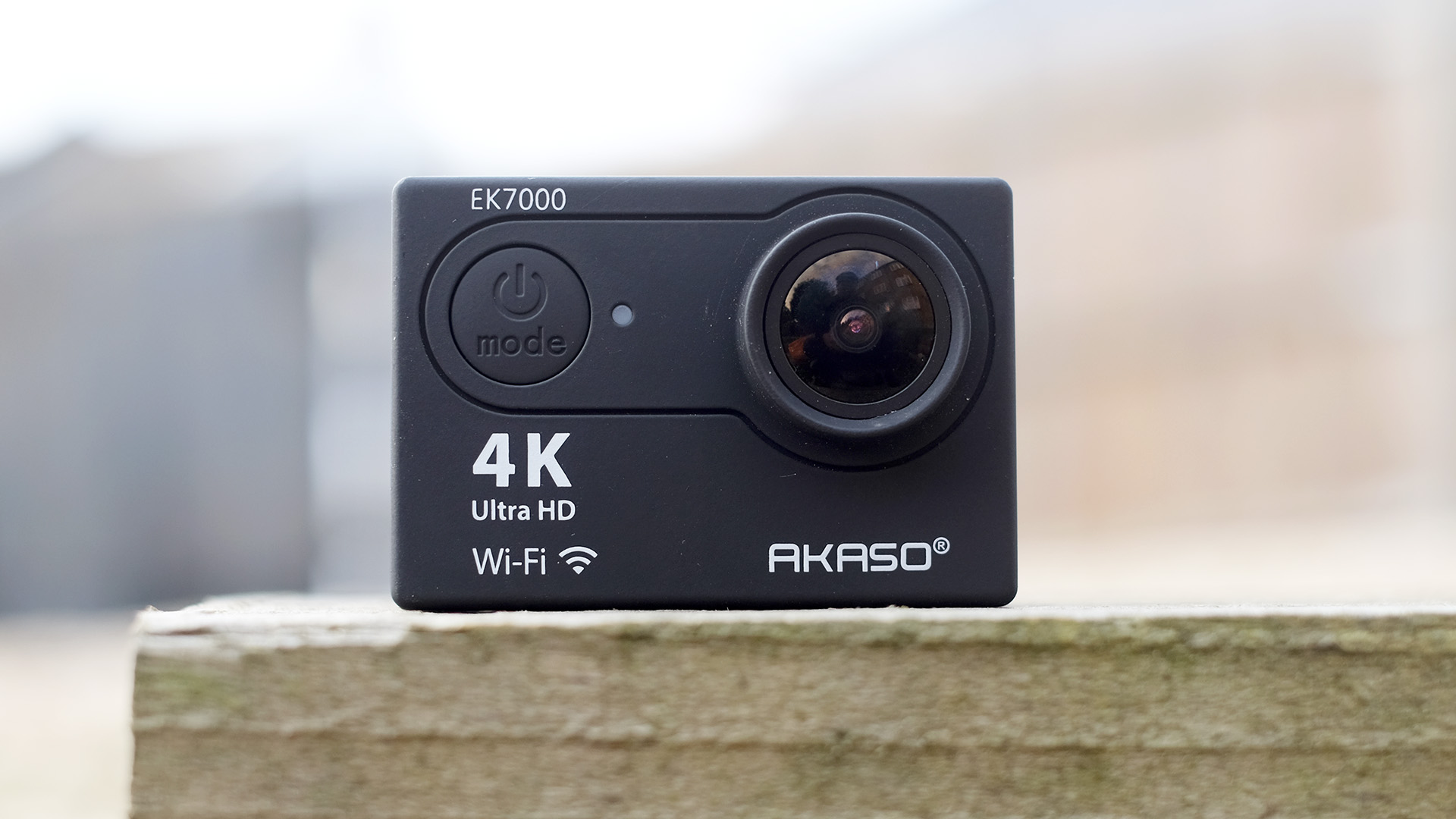
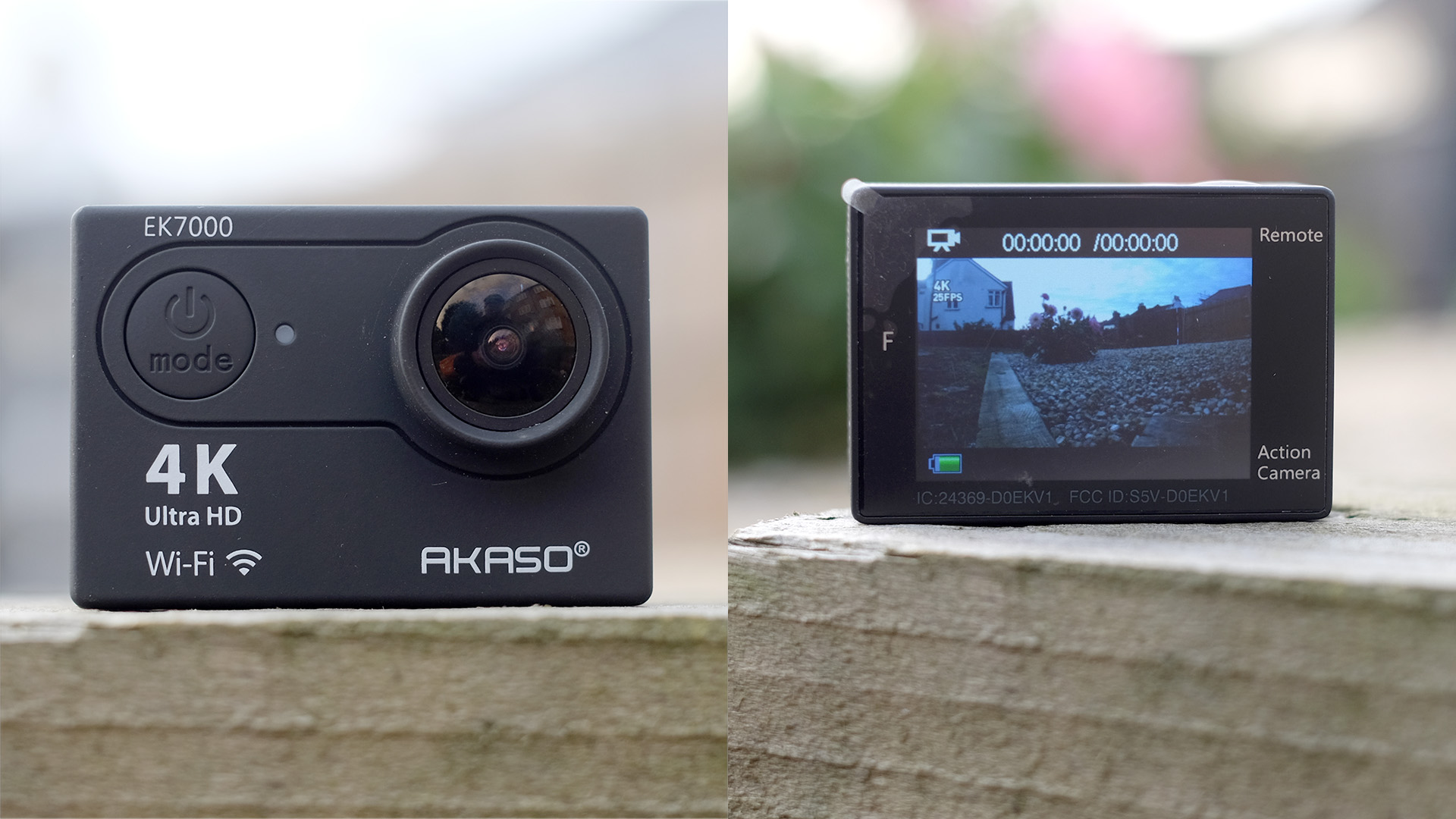
2. Akaso EK7000
Specifications
Reasons to buy
Reasons to avoid
The Akaso EK7000 looks an awful lot like the Dragon Touch Vision 4 Lite (see below). It has the same diamond pattern sides, an all-button interface, and those buttons sit in exactly the same spots. It has also fewer features – no stabilization and a slightly worse screen – but we liked it more and it’s a decent buy if your budget is very tight.
There are two main reasons for this. The Akaso EK7000’s interface isn't a headache to use. While there’s a carousel of menu items to flick through any time you want to change a setting, it makes better use of its four buttons to cut this button-mashing down.
Its 1080p footage also looks surprisingly good. This is key because, just like the Dragon Touch Vision 4 Lite, the 4K mode’s motion is super-jerky. Akaso says the EK7000 records 4K at 25fps, but judging by what we see it may be dropping frames or doubling up on them in the final file.
Scooch down to 2.7k at 30fps or 60fps at 1080p and things improve. The tone of the image is better and you really don’t lose all that much detail even at 1080p. Many cameras’ footage looks completely different as you cycle between resolutions, but here there’s just a slight detail hit. Stick to 2.7k or 1080p/60 for the best results.
For this price, we’d be pretty happy with the 1080/60p video the Akaso EK7000 spits out. Do we miss electronic image stabilization? Absolutely. A 60fps mode can make motion more fluid, but it won’t get rid of bumps. Still, stick your clips in a piece of video editing software like iMovie and it’ll do the job better than most of these cheap action cameras’ in-body processing.
What are the downsides? There’s no option to change the field of view, so you’re stuck with the native 'wide'. We’d argue it’s best to stick to a wide setting anyway as cheap action cam hardware does not weather digital field of view cropping well, but the option would be nice. The Akaso EK7000’s audio is also poor – it's muffled and quiet, which means it isn't really a vlogging option. But at this price, it's one of the best truly budget action cameras around.

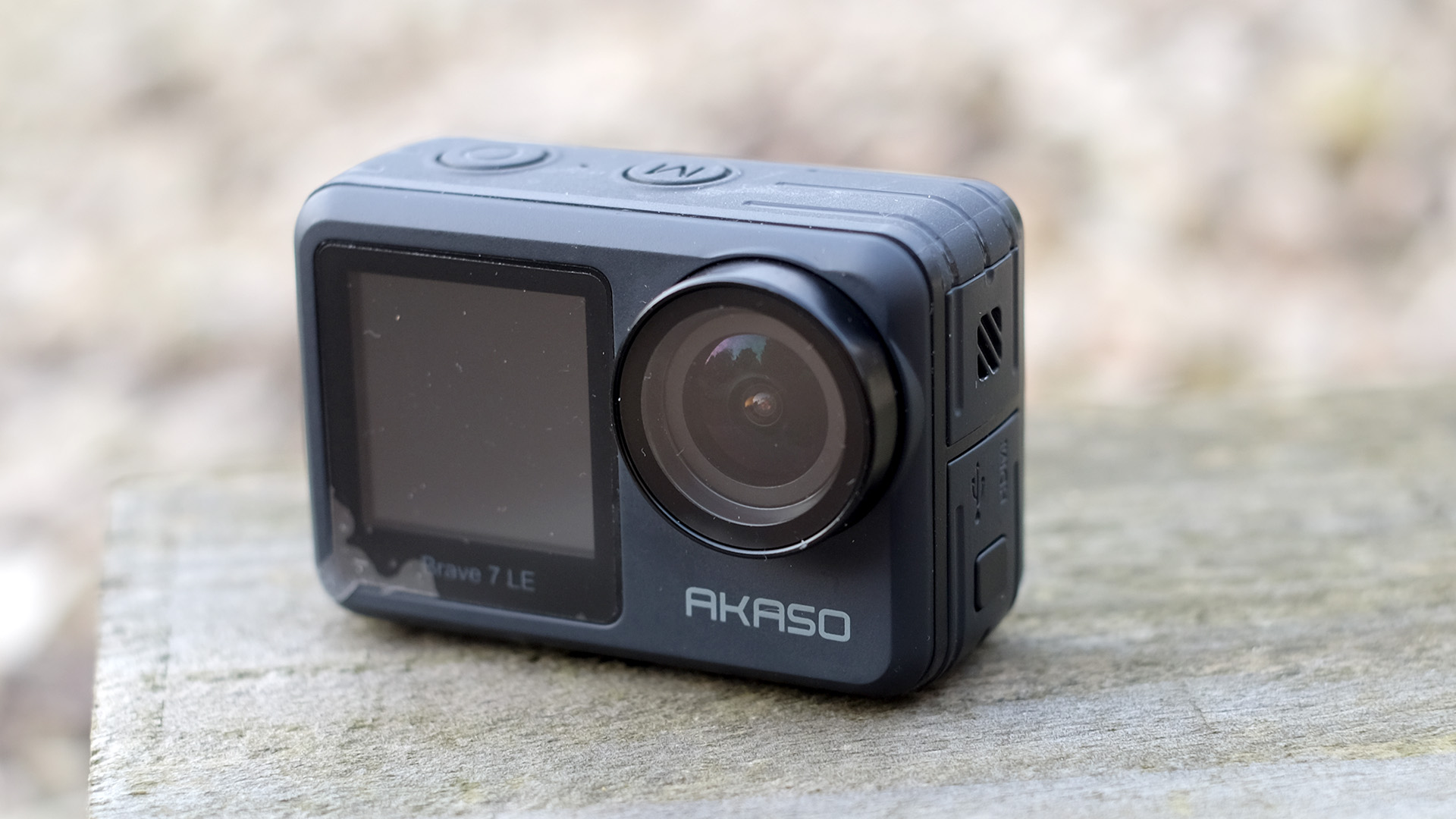
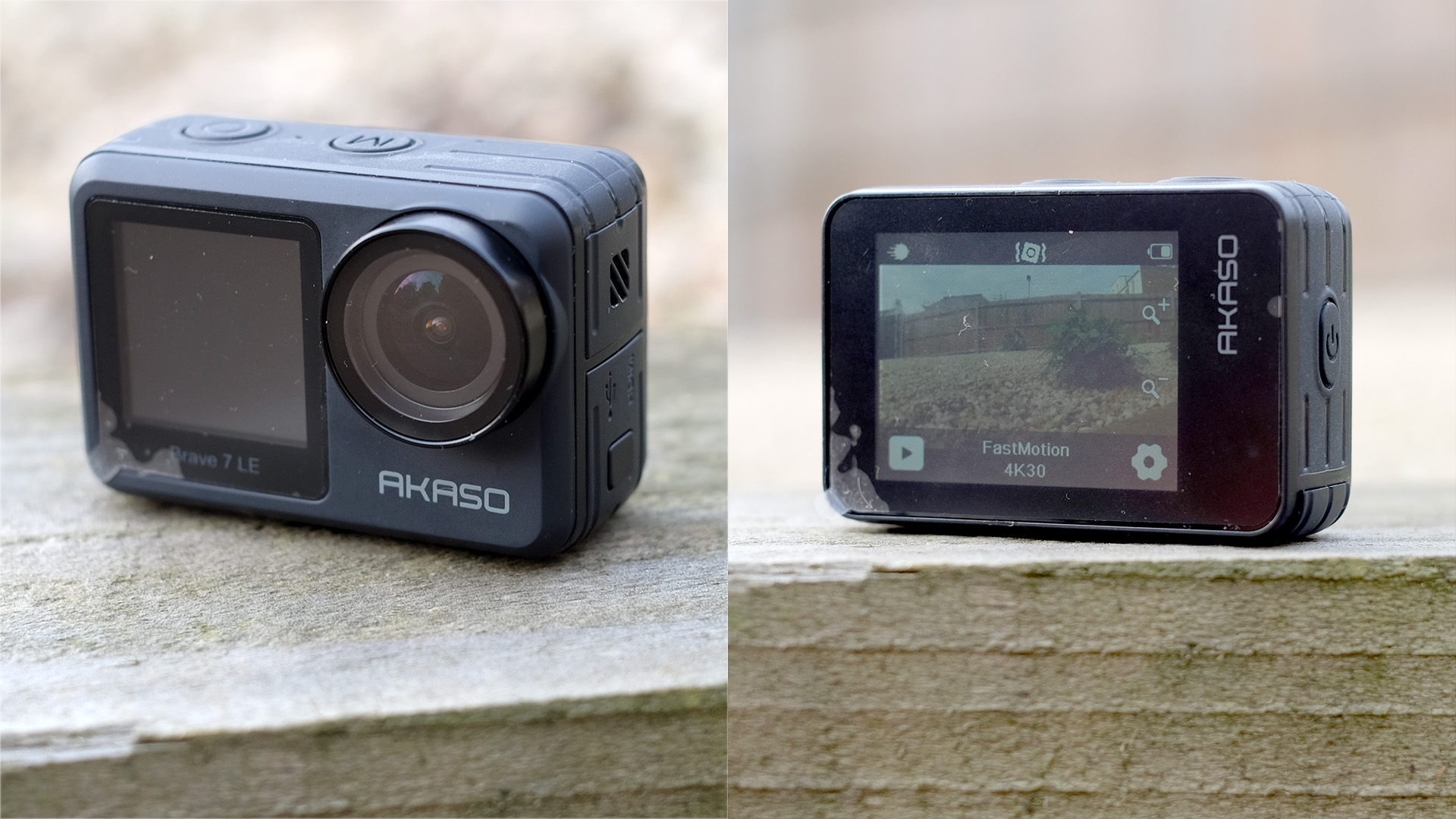
3. Akaso Brave 7 LE
Specifications
Reasons to buy
Reasons to avoid
Akaso has changed the cheap action camera game with the Brave 7 LE. This is a cheap action camera with most of the features of a top-end model.
These include dual displays, one on back and another up front, and weather sealing. Rubber bungs over the two ports provide IPx7 water resistance without a case. It’s all you need unless you want to start snorkeling with your action camera. And a diving-style case with 40m waterproofing is included too.
The Brave 7 LE also feels more high-end than any other camera we’ve seen around this price. A lot of this comes down to weight. At 127g it’s twice as heavy as the action cameras that seem like empty boxes when you pick them up. The plastics used are of higher quality too.
Creating a good first impression is one thing, but Akaso has put more effort into other areas too. The Akaso Brave LE 7’s audio quality is better than any other non-GoPro tested here when used in a quiet environment. The quality of the mic is good. As it uses a single mic it’s highly susceptible to wind noise, but there is a basic wind noise reduction mode that helps a bit. Still, there’s only so much you can do with a single mic array.
Akaso’s user interface is great. It’s touchscreen-led and has the touch of gloss you don’t see in most other GoPro clones. Dare we say it: for the basics it’s faster and more intuitive than GoPro’s own.
The Akaso Brave 7 LE looks, feel and sounds the part. But we weren’t blown away by its video quality. It tops out at 4K resolution, 30 frames per second. Video shot at that setting looks good but doesn’t have quite the same clarity and detail as the Apeman A100. Given the effort clearly put in here, we expected the Brave 7 LE to top the chart, but it didn’t. Something strange also happens when you switch to 60fps modes, available at 2.7k resolutions and below. Footage looks highly aliased, or 'blocky', so 2.7k clips don’t look anything like they have that amount of detail.
The Akaso Brave 7 LE also leans heavily on noise reduction as the light level dips, making your footage appear soft regardless of the resolution. Electronic image stabilization is fair, but a little jumpy, as if it only catches up on motion at a delay, rather than aiming to make pans appear smooth.
Still, for the price, the Brave 7 LE is an impressive budget action camera, though a little more work (and a better sensor) is needed to make it a true rival to the DJI Osmo Action or GoPro Hero 9 Black. The camera does also support use as a webcam, but we couldn’t get it to work with our test MacBook or Windows 10 laptops. You may have better luck.

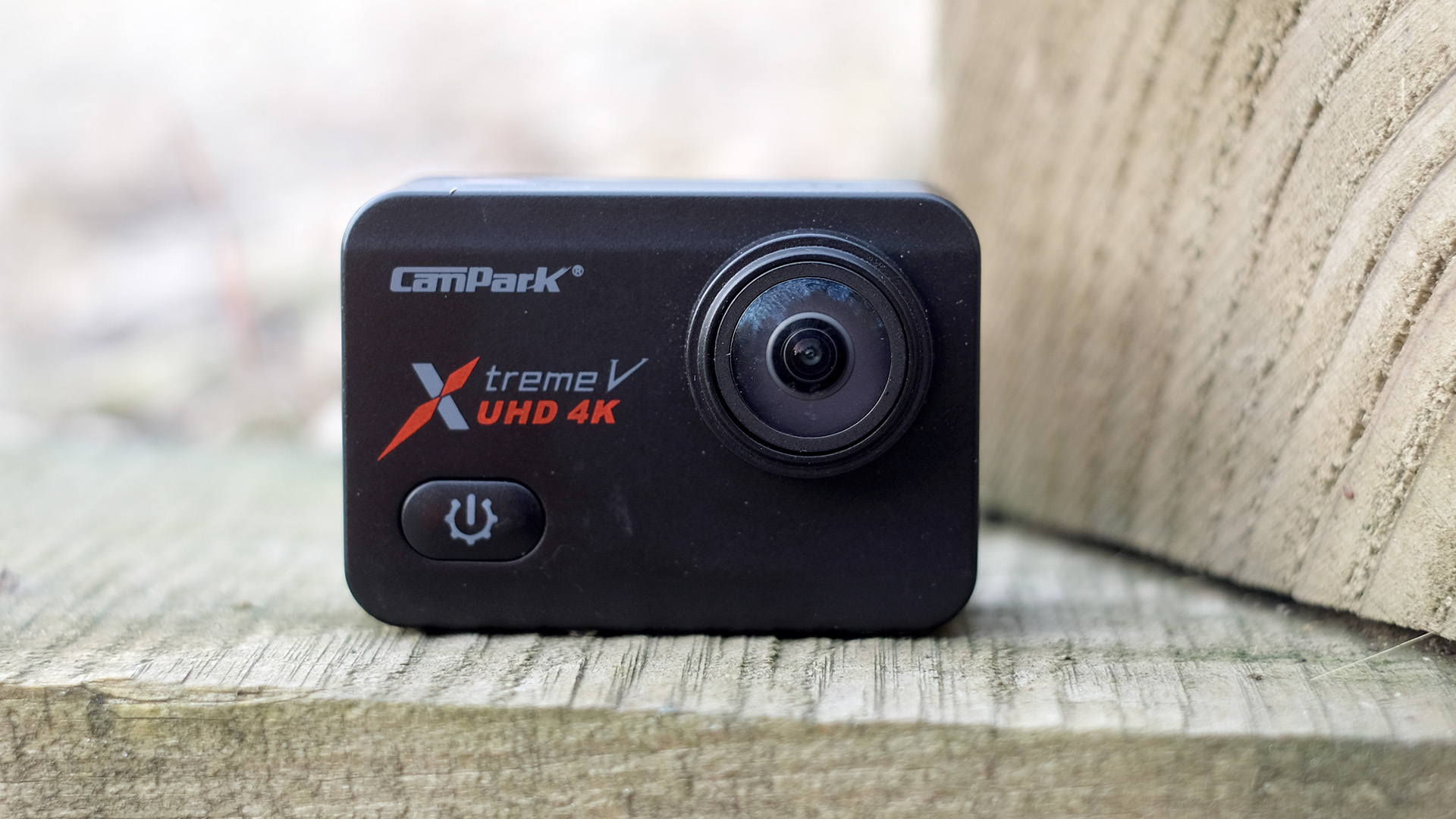
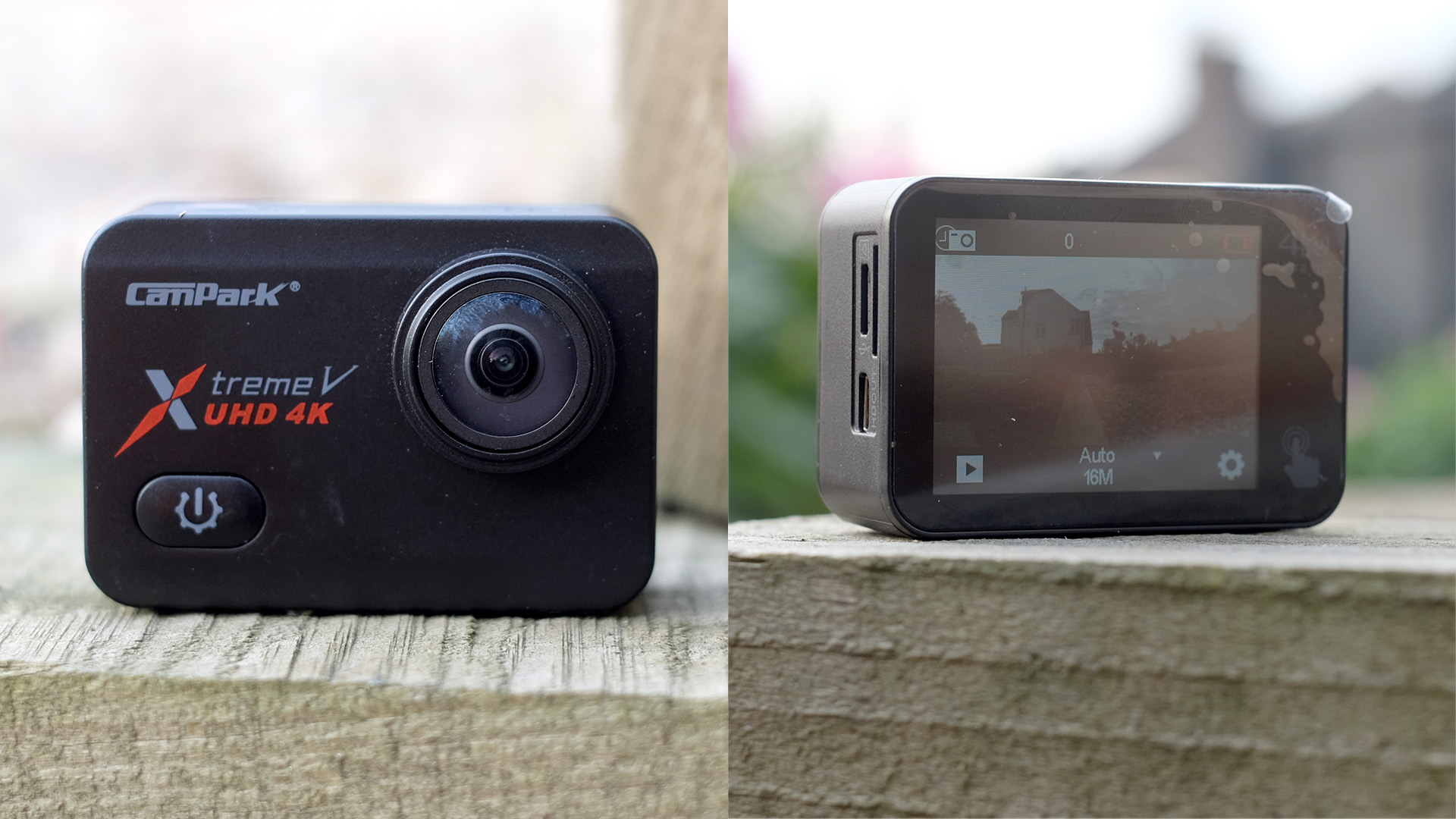
4. Campark X30 Xtreme V
Specifications
Reasons to buy
Reasons to avoid
The Campark X30 Xtreme V is a mid-priced budget camera. It costs more than the ultra-cheap models, but dips below the Apeman A100 – and for some people, it may be the sweet spot. For example, the reassuringly solid X30 Xtreme V feels has a built-in tripod thread. You can mount it without any accessories at all, although the exposed ports mean that’s probably a bad idea, unless you’re shooting indoors or on a sunny day.
Its microphone quality is solid too. Voices sound louder and clearer than any of the ultra-cheap cameras, second only to the Akaso Brave 7 LE. The X30 Xtreme V has a touchscreen and a decent interface, which is very similar to that of the Apeman A100 and Kaiser Baas V50 (above).
However, we encountered more basic problems here than with the other cheap action cameras. Try to change the field of view, or switch electronic image stabilization (EIS) on and off, and the Campark often just won’t play ball. Make these tweaks and the preview image, and resulting video, just stay as they were before.
This also doesn’t appear to be a true 4K camera in most modes, as footage recorded using the '4K/30p' and '4K/60p' modes is 3200 x 1800 resolution, not 3840 x 2160. The 4K/60p mode, which would otherwise be standard-setting, also uses a restrictive crop that further reduces captured detail. It looks more like 1080p.
You can get true 3840 x 2160 clips out of the Campark X30 Xtreme V by switching off EIS, and they can look good. But in most occasions we’ll want to use stabilization. That stabilization is just OK, introducing a fair amount of image wobble at the corners of the frame.
Overall, the experience of using the Campark X30 Xtreme V is a little too inconsistent for our liking, even if it can produce solid 4K video at 30 frames per second. Even without these interface issues, we think the superior dynamic range of the Apeman A100 (see above) is worth the bump up in price. The X30 also more-or-less gives up in very low light, and can’t be used as a webcam with Macs or PCs. We tried: you only get the option of a charging connection or mass storage when you plug it in.

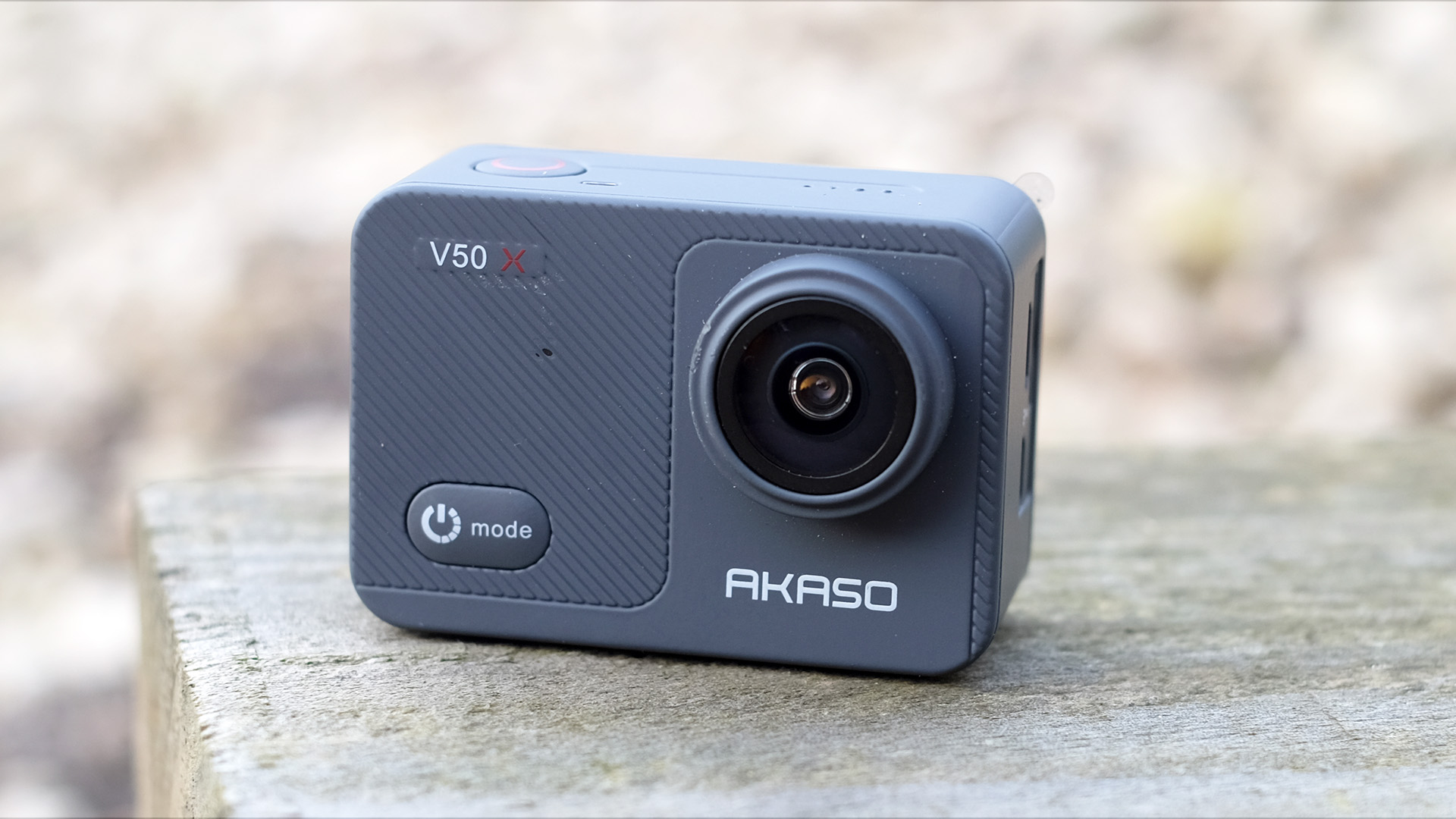
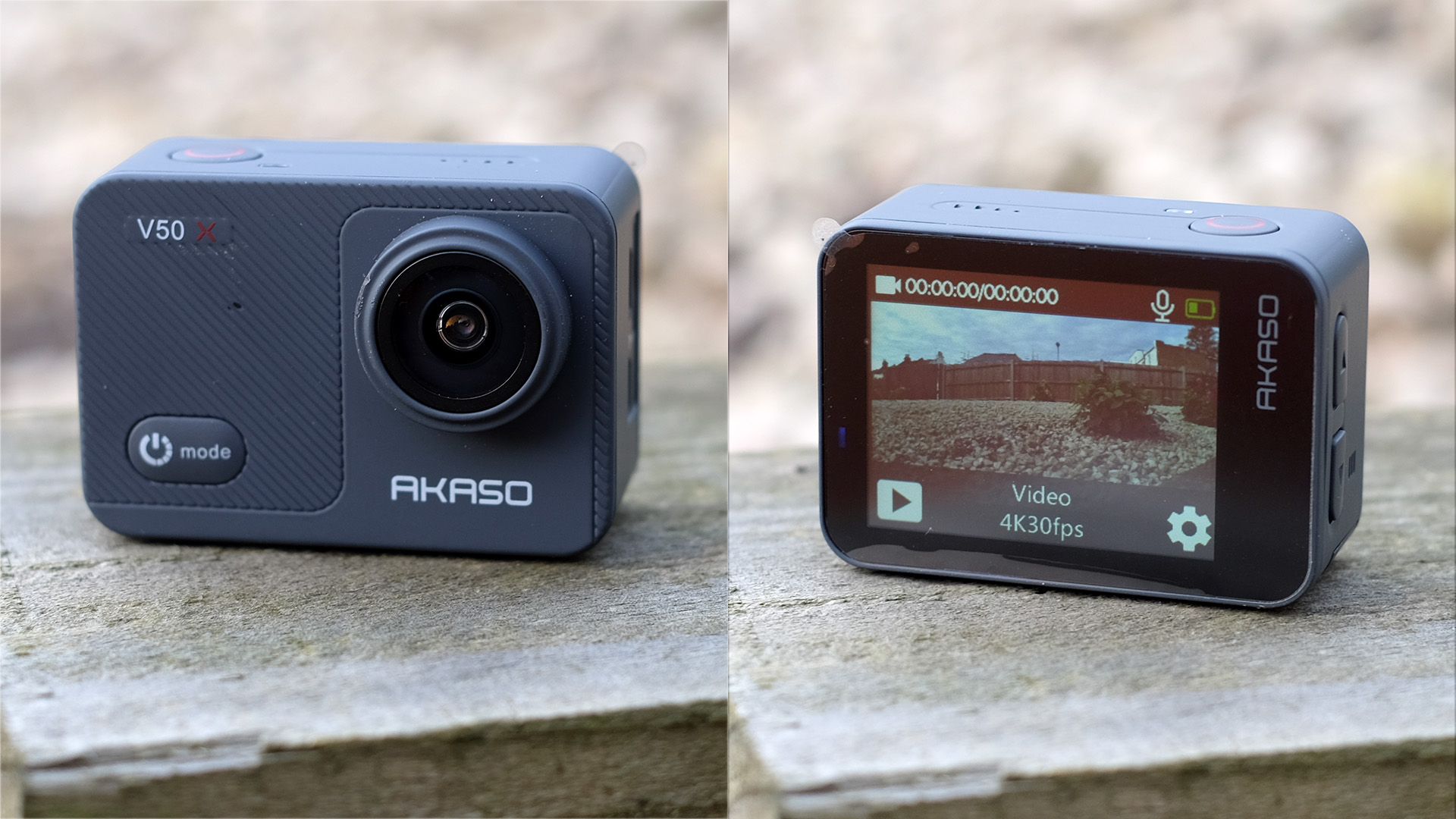
5. Akaso V50 X
Specifications
Reasons to buy
Reasons to avoid
If there’s one word to sum up the Akaso V50 X, it’s 'soft'. Its 4K video is less sharp than the cheaper Akaso EK7000’s, and that’s a camera we recommend using at 2.7k or 1080p because 4K doesn’t bring much benefit. Whether Akaso used the wrong lens, wrong sensor or the wrong processing, something is not quite right in the Akaso V50 X.
It's a shame because the camera has a responsive, fairly pretty UI with more gloss than another models at the price. Stabilization is also among the best in its class, able to make walking speed motion look very smooth. We did wonder if electronic image stabilization caused image quality degradation, but turning it off had no effect on clarity.
This isn’t the best overall option you can buy at this price, but it's not without its merits. For example, the Akaso V50 X works perfectly well as a webcam. Just plug it in and select 'PC Camera' (it works fine on Macs too).
There’s also a threaded input for a tripod or other mount right on the camera, and it even supports an external microphone over microUSB. The internal one is decent, too, with clarity just a level below the Akaso Brave 7 LE. Some of the Akaso V50 X’s elements are dead on, but the video quality isn't quite there.

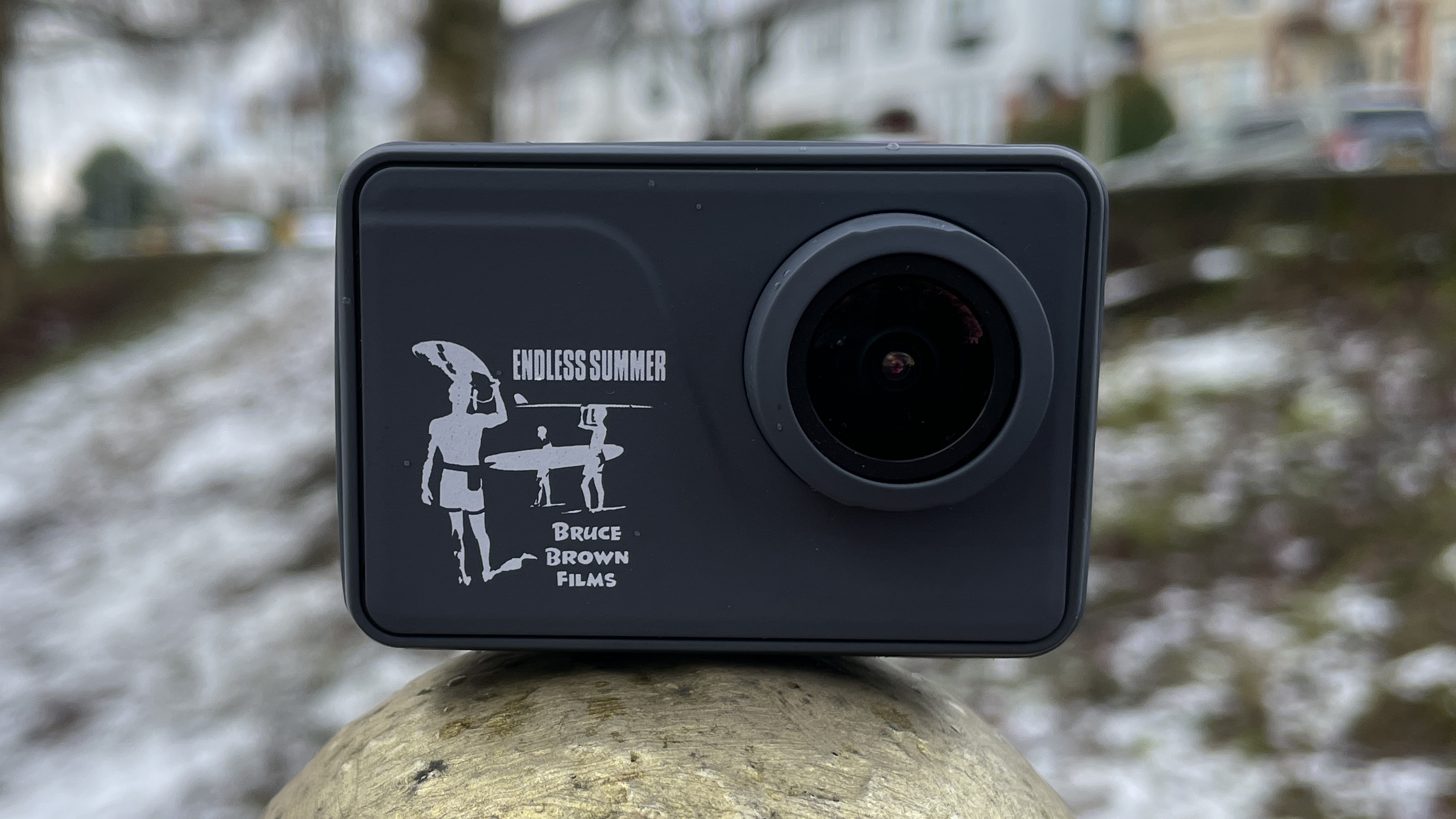
6. Akaso V50 Pro
Specifications
Reasons to buy
Reasons to avoid
Very low-priced 4K action cameras are best approached with caution, but here’s a mould-breaker. Capable of 20MP photos and 4K/30fps video, the Akaso V50 Pro covers the bare bones basic features and nothing more.
That’s because as well as respectable results it comes with a host of extras that you really shouldn’t expect at this low price. On the camera itself there’s a 170-degree wide-angle lens, a large touchscreen and a very welcome 1/4-inch tripod thread (something no GoPro has), with the only quirk being a Mini USB slot for recharging its internal 1,100 mAh battery. Mini USB? They haven’t been in circulation for a decade!
Luckily, there’s a Mini USB cable in the box, but it’s not alone. Also in there is a pile of accessories ranging from two spare batteries and a separate charger to a handy wrist remote, a waterproof case, a mounting frame, a huge collection of screws and mounts for bikes and helmets, sticky fixes, zip ties, Velcro strips and a cleaning cloth.
The V50 Pro's 4K video benefits from basic electronic image stabilization (EIS) tech that does work better as you drop down to 2.7K/30fps and 1080p/60fp, but 4K video is always watchable. There are tons of modes, from slo-mo and fast-mo to time-lapse file length limits (to one, three or five minutes).
How has Akaso made this camera so affordable? We’re still not sure. OK, so there’s none of the 4K/60fps and 5K/30fps video you’ll find on the latest high-end action cameras, and nor is there a front-facing display. But given its decent resolution, excellent build quality and acceptable performance, it’s an undeniable bargain if you’re after the basics.
- Read our in-depth Akaso V50 Pro review
How to pick the best cheap action camera for you
Here are five things to look for when shopping for a budget action camera:
1. Does it have EIS?
EIS, electronic image stabilization, is a must if you want remotely smooth-looking video. A totally non-stabilized camera is a reminder how much our hands move even when standing still. However, if the budget is really tight you can add this smoothing with software on your laptop. And the EIS of really cheap cameras is completely useless anyway.
2. Can you plug in a mic?
Read on and you’ll find out about the wildly varying quality of the audio of some of these action cams. Image quality bears almost no correlation with sound quality. Anyone semi-serious about creating videos should look to record sound externally, and that’s much simpler if you can attach a mic via USB or a 2.5mm input.
3. Does it have the accessory you need?
We were bowled over by the sheer wealth of accessories most of these cheapo cameras include. But have a look over the product listing to make sure the one you want is included. Remotes are a surprise hit, a fantastic 'freebie' that lets you shoot stills of video with the press of a button. Cyclists take particular note, as handlebar grips need a specific accessory.
4. Don’t be fooled by the features
The number one tip when buying any cheap Chinese tech is not to be fooled. Low-cost action cameras and projectors always seem to tick the right boxes on paper, but rarely do in reality. Don’t believe the hype of a camera that costs $40 dollars and claims to shoot amazing 4K video. It won’t. But that’s why we’re here: to see what a $40 action cam is actually good at.
5. Check the water resistance
Almost all cheaper action cameras have no water resistance without a case. The good news: all in this test bar the GoPro Hero 7 White come with one as standard. The bad news: these cases ruin audio capture and also spoil image quality to an extent. They put a layer of plastic between the subject and the camera lens, which is far less crystal clear than it looks. The ideal is still an action cabers with baked-in water resistance. Don’t use the waterproof housing unless you need to.
What is a good cheap GoPro?
GoPro cameras have long been the action camera brand to beat. They offer a range of creative shooting options, class-leading image stabilization and smooth, sharp footage, all in compact packages that are tough enough to go almost anywhere. Trouble is, you usually have to pay quite a lot for that combo.
If you’re willing to look at an older model though, it’s possible to find a cheap GoPro that still ticks a lot of the right boxes. Take the GoPro Hero 7 Silver. Released in 2018, the Hero 7 Silver has always been a mid-range model, sitting between the White and Black options in the line-up. All the same, it’s still a capable option for those with a spending cap: it’s waterproof to 10m without a housing, features a touchscreen and can capture decent 4K footage at 30fps. The good news for buyers on a budget is that, because of its relative age, the GoPro Hero 7 Silver now represents excellent value. You’ll find it widely available online for prices in the region of $235 / £200 / AU$300.
Even today, the more capable GoPro Hero 7 Black remains more expensive. That’s because it features HyperSmooth image stabilization, can shoot 4K at a smoother 60fps and has a useful removable battery. But there’s good news for deal hunters: with Black Friday fast approaching, there’s every chance you’ll find an excellent discount on the GoPro Hero 7 Black in November. It’s been pushed even further down the pecking order with the recent release of the GoPro Hero 10 Black, which means it’s a shoo in for savings.
Sure, it won’t drop down to anything like the prices of some cameras in this list, but you could well see significant amounts shaved off its current price, making it a great value option.
How we test action cameras
Action cameras are among the toughest cameras around, so we properly put them through their paces to make sure they live up to their rugged billing – and can shoot excellent video and stills, too.
We take each one through a range of real-world tests including cycling, swimming and, if possible, an experience like an adventure course. These not only give us a good idea of each model's ability to withstand the elements, but how easy they are to operate in difficult conditions.
When it comes to footage, we record in a variety of resolutions and frame-rates to help gauge each action camera's strengths, and review these clips on a calibrated monitor. We look at default color reproduction and noise levels in shadows and highlights, and look out for any common image quality issues including clipping, softness, barrel distortion and over-zealous processing.
We go through a similar process to analyze each camera's image stabilization, which is crucial to maintaining image quality during movement, and look at the quality of any special shooting modes too, including slo-mo and timelapses.
For battery life tests, we continuously record at different resolutions and frame-rates. We note down both how long the action cams lasts and when it has to shut down due to overheating. Lastly, we evaluate how user-friendly each camera is, by testing both their touchscreen interfaces and companion apps.
- Looking for a GoPro? Here are the best GoPro action cams
- These are the best action cameras you can buy right now
- Need a water-resistant snapper? Check out the best waterproof cameras
- Check out the best cameras for kids
- For the best all-rounders, see our guide to the best cameras
- Treat your car to one of the best dash cams around
- GoPro Hero 9 Black vs Hero 8 Black: which is the best GoPro for you?
Get daily insight, inspiration and deals in your inbox
Sign up for breaking news, reviews, opinion, top tech deals, and more.

Mark is TechRadar's Senior news editor. Having worked in tech journalism for a ludicrous 17 years, Mark is now attempting to break the world record for the number of camera bags hoarded by one person. He was previously Cameras Editor at both TechRadar and Trusted Reviews, Acting editor on Stuff.tv, as well as Features editor and Reviews editor on Stuff magazine. As a freelancer, he's contributed to titles including The Sunday Times, FourFourTwo and Arena. And in a former life, he also won The Daily Telegraph's Young Sportswriter of the Year. But that was before he discovered the strange joys of getting up at 4am for a photo shoot in London's Square Mile.